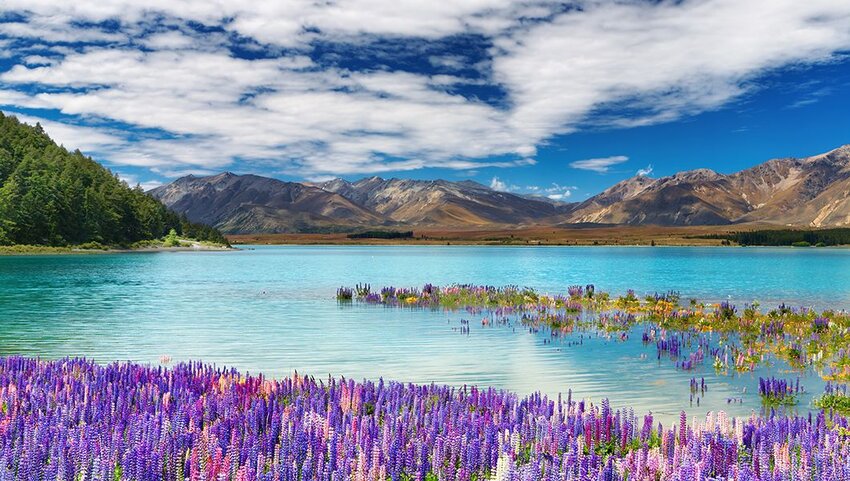From swimming through vibrant coral reefs to sailing along a cerulean archipelago, there’s something about clear water that captures the imagination. While there are many beautiful lakes and seas around the world, a few particular spots stick out for their striking colorIf you’re a lover of azure pools, indigo waves, and sapphire sea, here are the spots where you can see the bluest water in the world.
Mudhdhoo Beach, The Maldives
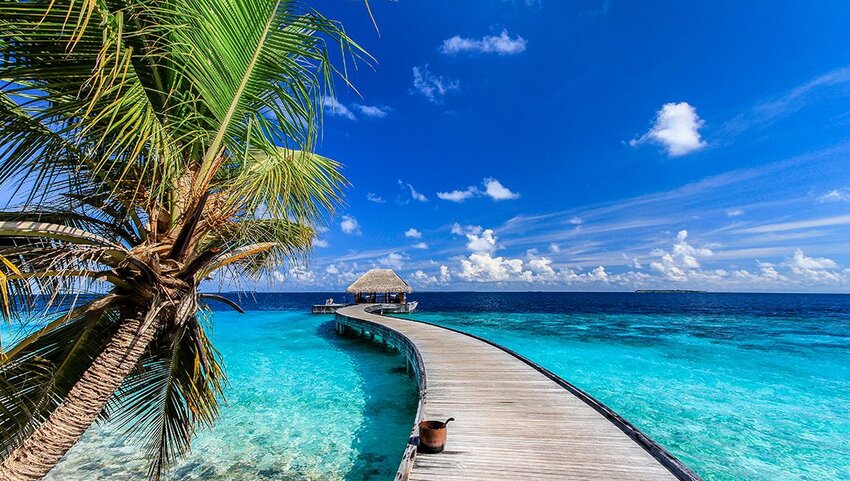
Like a necklace of jewels stretching across the Indian Ocean, The Maldives are renowned the world over for their aquamarine waters, which surround hundreds of tiny atolls. This archipelagic nation is made up of over 1,200 islands, stretching out over 500 miles of the sea.
While you’ll be spoiled for choice in any area of the Maldives, one of the best places to see stunning blue ocean is on the island of Mudhdhoo. Mudhdhoo is one of the most pristine beaches in all of the Maldives, a hard-won feat considering that this island country has endless options. Aside from its powdered sugar beaches and swaying palms trees, Mudhdhoo lends the aura of being on a deserted island. The real star of the show though, is the bioluminescent plankton that glows along its shores at night.
Lago Pehoe, Chile
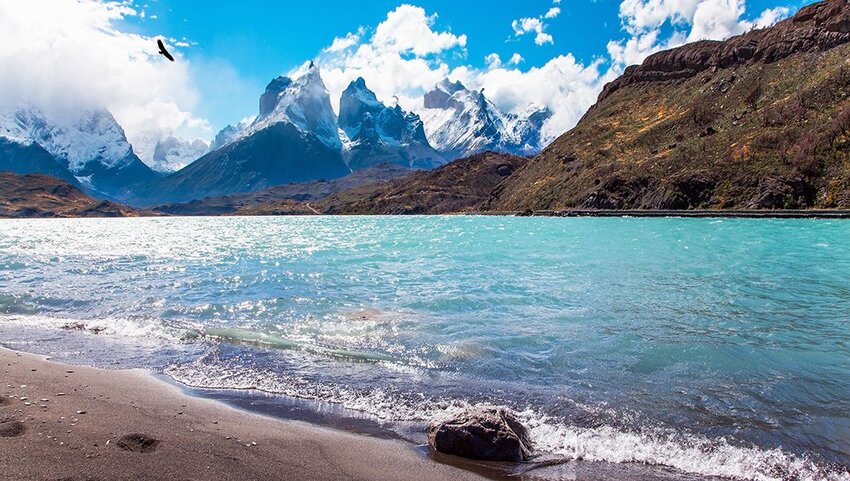
Situated in the Magellanic Region of southern Chile, the famous Torres del Paine National Park is home to the irresistible Lago Pehoe. With the striking Cerro Paine Grande mountains situated around its serene waters, Lago Pehoe isn’t just distinctively blue but it also reflects one of Chile’s most dramatic landscapes.
While this area of South America can be difficult to reach, often requiring multiple modes of transportation like small seaplanes and bus rides, its remoteness only adds to its beauty. Spot the local colony of magellanic penguins waddling along the shore while exploring vistas of snowy peaks and quaint mountain villages colorfully dotting the rim of the lake. If your quest for Chilean lakes isn’t quite satiated yet, head to the Lake District of Chile to encounter even more colorful homes and distant volcanoes.
Great Blue Hole, Belize
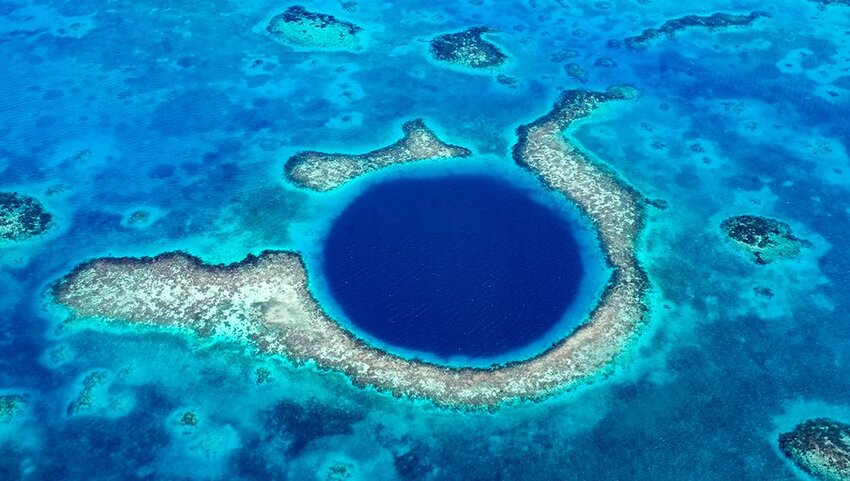
In the middle of Lighthouse Reef, 70 kilometers off the coast of the small Central American country of Belize, a giant marine sinkhole stares unblinking into the sky. This is the Great Blue Hole, a 1,000-foot-wide chasm in the Caribbean Sea.
Explored and fished for centuries by Belizean locals, the Great Blue Hole skyrocketed in popularity as a diving destination after the famous oceanographer Jacques Cousteau discovered it in 1971. Now a protected UNESCO World Heritage Site, divers come from around the world to try their hand at descending into its inky depths, watching the sun fade further away from the surface. Whether you want to get a bird’s eye view from a helicopter flyover or you’ve got the diving certification and required hours to explore it first hand, the Blue Hole will leave you feeling mystified at the majesty and power of the ocean.
Crater Lake, Oregon
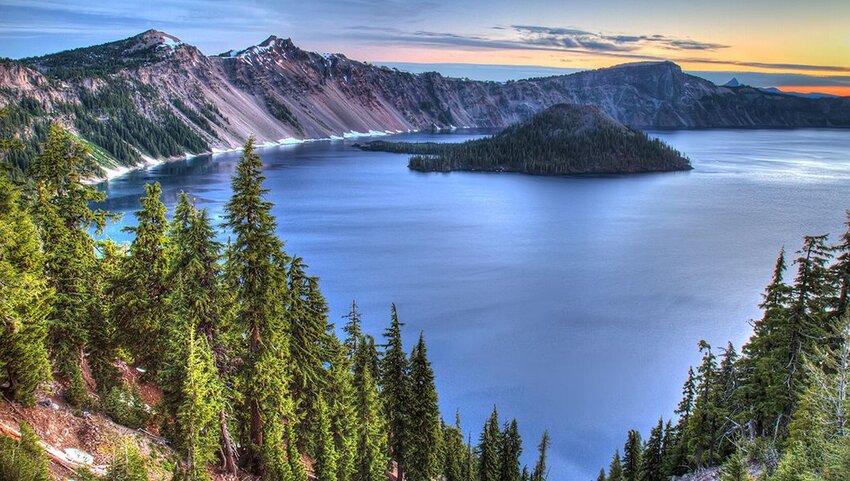
Crater Lake is an indigo gem dotting the Cascade Range volcanic arch in the United States Pacific Northwest. Crater Lake’s deep blue water is so legendary because no rivers or streams feed the lake, creating conditions that lend to its crystalline water. All of the water in the lake comes from either rain or snowmelt. Sit along the lakeshore among colorful wildflowers and gaze out into the azure waters of the deepest lake in the U.S. You’ll spot two islands dotting the surface: Wizard Island, a cinder cone leftover in the wake of the eruption, and Phantom Ship, a craggy rock formation.
Crater Lake’s creation is as scientific as it is mystical. The Klamath peoples of southern Oregon say that their ancestors witnessed the collapse of Mount Mazama and thus attributed spiritual significance to this natural wonder. The caldera was formed over 7,000 years ago when the volcano erupted, leaving behind a 2,100-foot-crater in its wake. Visitors can swim in the lake's azure water from the designated beach along the Cleetwood Cove Trail or go on a two-hour boat ride with a park ranger to get an in-depth look at the lake and its history.
Palawan, Philippines
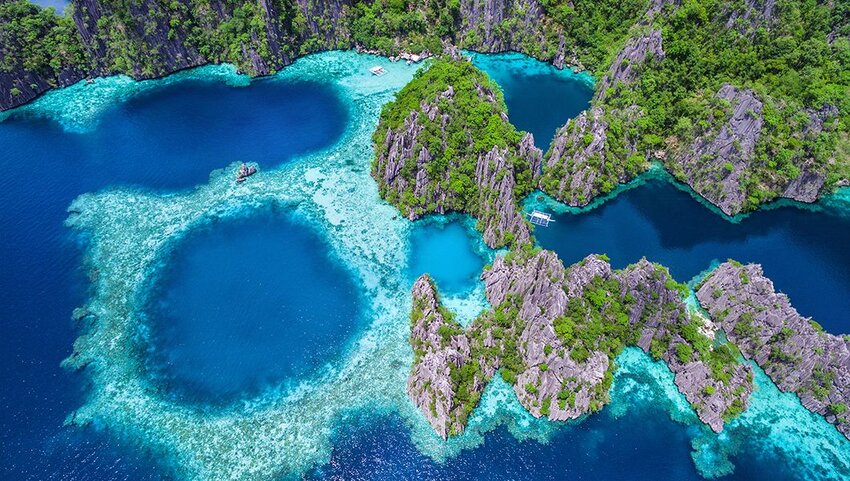
Located in the Mimaropa region of west Philippines, almost touching Indonesia, Palawan is an equatorial wonderland, inviting intrepid travelers who love to explore tropical locales and those who seek out intense blue water. Palawan is both the name of the island and the largest province in The Philippines. It is consistently ranked as being one of the most beautiful islands in the world with majestic limestone cliffs, centuries-old shipwrecks, and colorful reefs all adding to its stark beauty.
Palawan is a scuba divers' paradise and includes UNESCO World Heritage sites like Tubbataha Reef Natural Park and the world’s longest navigable underground river. With destinations on the island like Kayanagan Lake, home to some of the bluest water in the world, and El Nido, you can’t go wrong no matter where you decide to seek out cerulean seas. If your diving adventures have you hungry, be sure to stop in to Palwan’s capital of Puerto Princesa to try local delicacies like tamilok, woodworms who live in mangrove trees, or something a little more tame like fresh lobster.
Lake Tekapo, New Zealand
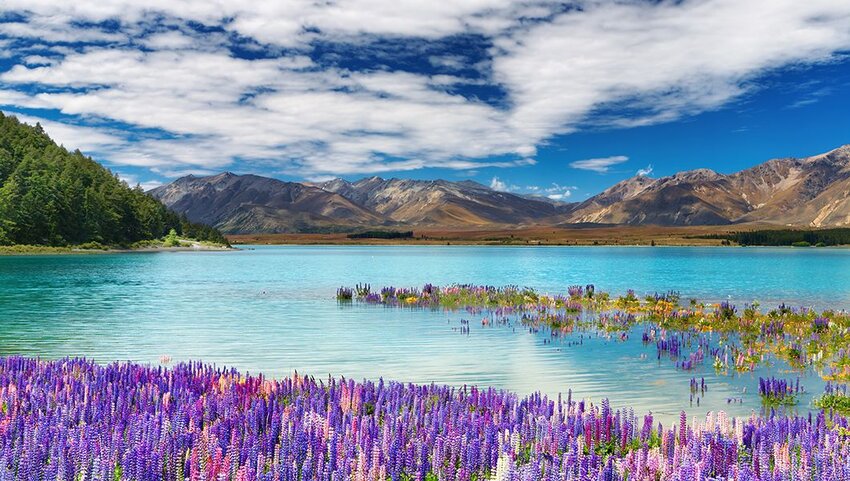
Only three hours south of Christchurch on the south island of New Zealand, Lake Tekapo is one of the most dazzling bodies of water in the world. As one of the pinnacles of the Southern Alps region of New Zealand, Lake Tekapo gets its milky, turquoise appearance from nearby glaciers. Rock-flour is suspended in the water, coming straight from the lakes headwaters and mountains themselves, lending the lake its cloudy, sky blue color.
As part of a UNESCO Dark Sky Preserve this is one of the best places in New Zealand for stargazing. Bundle up on the lake edge to view the cosmos or better yet, don your swimsuit and watch them from a nearby, geothermally fed Tekapo hot springs. One of the best photo opportunities along the lake is the lupine field, blooming in a blaze of brilliant pinks and purples in the summer months that contrast perfectly with Lake Tekapo’s turquoise waters.

